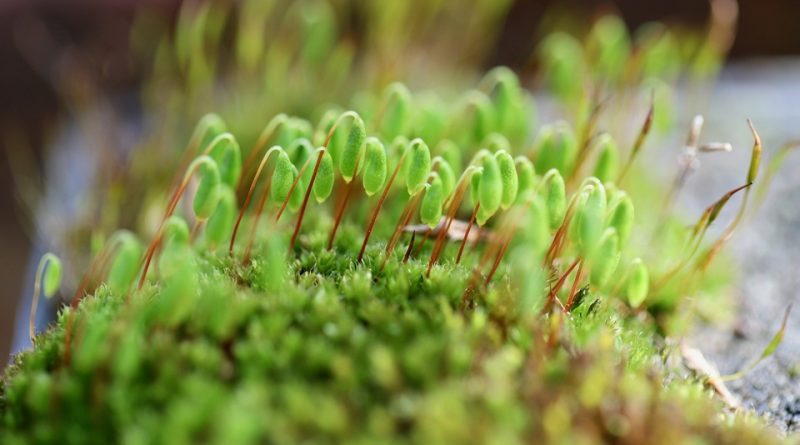Ecological role of mosses
Ecological role of mosses
Mosses are small plants without vascular tissue of the Bryopsida class. This plant class has around 10,000 species spread throughout the world, mainly in wooded areas and along watercourses, where shade (sciaphilia) and humidity prevail.
These plants, characterized by poorly developed stems and leaf-like structures, appear as the most advanced and voluminous members of the Bryophyta division, being able to reach extensions of 20 cm (up to 50 for the tropical moss Dawsonia superba). Some species (Sphagnum spp.) do not contain chlorophyll but can accumulate large quantities of liquids in their tissues by osmosis.
Mosses are able to accumulate abundant quantities of liquids by osmosis, the absorption and transport of water and other nutrients occurs by capillarity over the entire surface of the plant, this determines its small size and generally horizontal and flat growth , although near water sources they can grow vertically.
Mosses can grow and resist in various environments, but they prefer cool and humid areas, in particular the undergrowth or areas adjacent to springs, where it is easier to observe them on the sides exposed to the north.
Ecology –
Mosses play very important ecological roles. In the forest ecosystem they play a fundamental role because they retain the seeds of forest plants, promoting their germination. Mosses are not parasites, therefore they do not damage the bark of plants, as they have their own photosynthesis activity and attach themselves to the soil and plants through root-like growths, called rhizoids. They manage to retain rainwater and air humidity, which allows them to survive high summer temperatures, contribute to soil conservation and prevent soil erosion.
Furthermore, mosses have proven to be a fundamental aid in the fight against climate change, because they are able to absorb large quantities of CO2, as well as contributing to the accumulation of essential elements in the soil, such as carbon and nitrogen which favor the holding of the soil but also the restoration of damaged ones. They also accelerate the decomposition of organic matter with a lower percentage of pathogens than other plants present in the soil, and soils without vegetation. The benefits they bring are essential for the protection of the ecosystem and for the balanced maintenance of biodiversity.
For this reason, many of these species are protected and included in the “Repertory of protected Italian flora” of the ‘Ministry of the Environment and Energy Safety’, which lists all the individual plant species protected by international regulations implemented by Italy.
For this reason, given the important ecological role that moss plays, it must not be eradicated and must absolutely be left where it is. During the Christmas holidays it is a good habit to avoid using this important resource to decorate nativity scenes, but to use your imagination by preferring other materials without causing damage to the environment.
Furthermore, mosses play an important role, as well as ecological, in protecting soil health, laying the foundations for the flowering of plants in ecosystems and contributing to the mitigation of climate change thanks to carbon sequestration.
This evidence was confirmed by a study conducted by the School of Biological, Earth & Environmental Sciences at the University of New South Wales in Sydney. The investigation, published in the journal Nature Geoscience, was based on the collection of samples from 123 ecosystems around the world and made it possible to quantify the presence of these plant species on a global scale.
In the environments observed, the researchers note, the specimens cover 9.4 million km2 of territory, a surface comparable to that of Canada or China. “We wanted to analyze mosses and their provision of essential services to the environment in more detail,” explained David Eldridge, professor and co-author of the study in a note released by the Australian university. “We were amazed to discover what incredible things they were capable of doing.”

